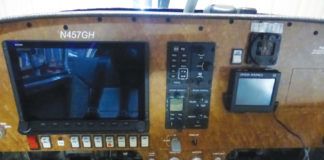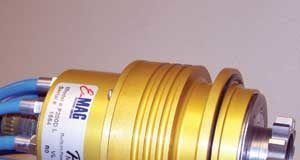One of the attractions of homebuilding is the opportunity to fly your own aircraft with a minimum of financial investment. Or is that really true? With nicely finished kit airplanes regularly coming in at over $100,000, can it be that the low-cost plane fantasy may be just that—a wistful dream?
To get a better feel for the possibilities of low-cost homebuilding in this age of super costly quickbuild kits, we attended one of Mark Townsend’s seminars on scratch-building from plans, where we learned and relearned many aspects of the budget homebuilding art. Townsend is the owner of Can-Zac Aviation at Kitchener, Ontario (CYKF), International Airport, the Canadian representative for Zenith Aircraft Company and an avid scratch-builder. Zenith is one of the few kit makers that still offers a plans-only option; the company supplies complete kits for the Zodiac CH 601 and STOL CH 701 models, but it will also sell sub-kits, individual parts or just the plans and builder’s manual.
During one of our visits to the Mexico, Missouri, factory, Zenith President Sebastien Heintz related that scratch-builders, initially intending to save money by fabricating each piece from raw stock, frequently convert to building at least partially with components from the kit.
“It doesn’t make a lot of sense to spend time making the forming block or jig for one piece when you can buy it from us for a relatively few dollars,” Heintz says. “Unless you just like the satisfaction of having created it yourself, it’s probably just as cheap to buy such a part.” The essence of homebuilding, under FAR Experimental/Amateur-Built rules, is recreation and education, and for some the joy of shop work is therapy to be prolonged. Not so with the builder impatient to fly his or her creation.
Scratch-builders are at the opposite end of the scale from the buyer of quickbuild packages. Having the holes pre-drilled is going to cost someone money, though the factory can do in minutes what a plans builder will take hours to accomplish. A conscientious scratch-builder, however, may have an idea of adding a custom touch, or how to use some items already on hand. Heintz justifiably discourages changes to the basic design by kit builders, but cosmetic alterations or minor changes may be acceptable. Zenith has always taken the position that it’s better to support innovative plans builders with advice and parts than to let them proceed unaided. Ignoring what could be an unsafe aircraft benefits no one.
What does it take to hold down the building budget? A basic Zenith Zodiac CH 601XL airframe kit—tail, wings, fuselage and gear—is currently priced at $15,995. Scratch-building can reduce this figure, but, as Heintz says, one has to consider the trade-offs of time spent fabricating parts versus buying them. In any case, to get into the air for very little money is going to require a low-cost engine and propeller, a simple instrument panel and a minimum of paint and upholstery. “You don’t really need radios to just fly,” Heintz pointed out.
During his seminars, Townsend cautions that builders shouldn’t try scratch-building just to get into the air cheaply. The haste to fly may lead to rushing the building process, encouraging substandard work. Scratch-building, he insists, is for people who really love building and who enjoy seeing bits and pieces they’ve created come together. “Building a plane is an adventure,” he says.
The seminar began with the advice to “pick your battles,” as Townsend put it. Echoing what Heintz had said, he reiterated that there’s no point in building difficult-to-make parts that can be bought for a reasonable sum, unless you’re just pursuing it for therapy. Townsend even made the fiberglass tail tips for his Zenith Zodiac CH 601XL, but says it took entirely too much time, when they could have been bought from Zenith ready to mount. Buying a hardware kit from the company is a similarly sensible option, as opposed to chasing all over hunting down the bolts, nuts, rivets and cotter pins.
“Buy what you need, and build it as you go,” is Townsend’s advice. The pieces get larger and more complex as your skills mature, and your investment grows incrementally in an easy-to-afford manner.
He showed us wood forming blocks used for making Zenith 601 ribs. “Find Russian plywood, or some maple or oak stock,” he advised. Old salvaged farmhouse cabinets are a good source of such hardwood. By making the blocks, scratch-builders can take raw 0.016 6061 aluminum sheet and turn it into ribs. Of course, for a one-of-a-kind part used only in a single spot in the airplane, it makes more sense to buy it ready-made from Zenith, rather than waste time making up a forming block.
Midway through the seminar, participants were given an opportunity to bend up some tail ribs, clamping 0.016 aluminum blanks into the laminated blocks and pounding the edges over into the requisite 90° flange. “Use only rubber, wooden or plastic hammers,” Townsend cautions. Steel or other metal hammer heads leave bits of dissimilar metal in the aluminum to set up corrosion. He showed us how to use a crimping tool to train the metal into curves, and how to set the dimpled edges of the flange into slots on the edges of the block, using a smooth rod.
When it comes to putting together a tool collection, Townsend reminds the seminar participants that cheap tools are OK for the relatively short-lived process of building one airplane. Harbor Freight is a good source of reasonably priced tools—some that are amazingly good and some that reflect their bottom-dollar price tags—fine as long as you understand that fact going in. His $24 hydraulic rivet squeezer did the job just fine, he said, and a $30 drill press is good enough, but he cautions making sure it’s squarely aligned.
Tech support help is important if you’re scratch-building, and Zenith will answer questions as long as you own a serial number, whether building from a kit or plans. However, Townsend said, “If you want me to tell you how to build a brick, I can’t help you.”
The famous rudder kit Zenith sells as a get-acquainted starter item really teaches you all you need to know to build a metal plane, Townsend says. He also highly recommends Homebuilt Help’s DVD set to gain insight (www.homebuilthelp.com), and not just because he stars in the production. Everything important about building a riveted aluminum Zenith is in the DVD set.
Building a tool inventory as you go is the best way to indulge your itch to scratch-build. Even so, proper items must be selected. For instance, the shears used to cut metal sheets should not have serrated edges, which leave stress-rising unevenness on the part. Smooth-edge snips are required, and no cut should proceed closer than 3/8 inch to the tip, avoiding the discontinuous ragged-edge cuts left by the tip. Basic stuff, but good knowledge for the scratch-builder.
A bending brake with a maximum of 52 inches width is a necessary item. Townsend says pneumatic drills will require less deburring of the holes, but he’s been perfectly happy with a 14-volt electric drill. When shopping for a drill, he suggests taking along a #20 drill bit and some 0.025 aluminum sheet, so you can try the feel of the drill at work. “I want to know when it goes through,” he says. Some drills just feel different.
Townsend showed some of his favorite building tools, like the Olpha P800 cutter knife that can score 0.025 with its tungsten carbide blade, producing a clean cut with just a few strokes. A handy expandable rivet spacer saves a lot of measuring, but he cautions not to drill through its holes; just mark with them. When using a fly cutter to make big lightening holes, Townsend says to use it only in a hand drill; a drill press has enough power to fling the part across the shop.
Building worktables of varying heights allows easier assembly of both small and large parts. Or, as Townsend advises, you can make one knee-high table and set it on cinder blocks until you need a lower one.
You’ll absolutely need a copy of Advisory Circular 43-13 “Acceptable Methods” for guidance. Passing inspection requires knowing the standards in AC 43-13, such as one washer goes under a bolt head, two under the nut, and at least three threads of the bolt need to be showing beyond the nut. Sticking to the acceptable methods saves a lot of grief.
Work at the pace that you find satisfying. Townsend said pounding metal around forming blocks relieves the stress of his day. If you really get into it, it’s possible to make a set of 601 wings in six months, and the whole plane could be built in eighteen months. One builder did it in eight months—while holding down a full-time job!
Townsend reminds the attendees to never neglect the family, but rather to involve them in the building, as he did with his children, letting them work on parts of the narrow tail section. Steady work is important; if you stop building for a lengthy hiatus, it will take a month to get back up to speed, he advises. Working just an hour or two a day helps maintain your skills.
How much can you save by scratch-building? Townsend says building from a kit costs roughly three times as much as building from plans. However, this figure doesn’t include the cost of tools needed to scratch-build, such as a bending brake. And some things just shouldn’t be built, he says. He could bend up his own landing gear, but why would he bother when it can simply be bought from the factory? This may increase the cost but saves much time. Just check the web site for the price of a part and decide for yourself whether to build it or buy it.
Scratch-building requires dedication to maintaining strict records to assure passing FAA inspection. In Canada, Townsend says, the aluminum used in aircraft should carry a stamp on the back attesting to its origin. Have a paper trail on all materials.
The satisfaction of flying an airplane you’ve scratch-built is beyond any store-bought experience, in Townsend’s opinion. “I like to fly my plane into grass strips where there’s a barbecue going on, or a nice bed and breakfast, and I like to hear different people tell their flying experiences.” Zenith 601 owners, particularly plans builders, are just the most interesting to be around.




